On the dynamics of the spontaneous activity in neuronal networks
- PMID: 17502919
- PMCID: PMC1857824
- DOI: 10.1371/journal.pone.0000439
On the dynamics of the spontaneous activity in neuronal networks
Abstract
Most neuronal networks, even in the absence of external stimuli, produce spontaneous bursts of spikes separated by periods of reduced activity. The origin and functional role of these neuronal events are still unclear. The present work shows that the spontaneous activity of two very different networks, intact leech ganglia and dissociated cultures of rat hippocampal neurons, share several features. Indeed, in both networks: i) the inter-spike intervals distribution of the spontaneous firing of single neurons is either regular or periodic or bursting, with the fraction of bursting neurons depending on the network activity; ii) bursts of spontaneous spikes have the same broad distributions of size and duration; iii) the degree of correlated activity increases with the bin width, and the power spectrum of the network firing rate has a 1/f behavior at low frequencies, indicating the existence of long-range temporal correlations; iv) the activity of excitatory synaptic pathways mediated by NMDA receptors is necessary for the onset of the long-range correlations and for the presence of large bursts; v) blockage of inhibitory synaptic pathways mediated by GABA(A) receptors causes instead an increase in the correlation among neurons and leads to a burst distribution composed only of very small and very large bursts. These results suggest that the spontaneous electrical activity in neuronal networks with different architectures and functions can have very similar properties and common dynamics.
Conflict of interest statement
Figures

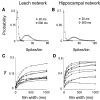
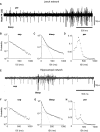
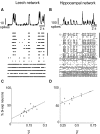
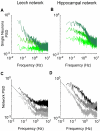

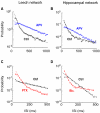
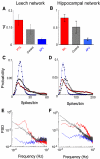
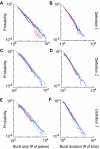
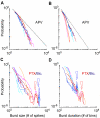
References
-
- Raichle M. The brain dark energy. Science. 2006;314:1249–1250. - PubMed
-
- Marder E, Calabrese RL. Principles of rhythmic motor pattern generation. Physiol Rev. 1996;76:687–717. - PubMed
-
- Calabrese RL, Nadim F, Olsen OH. Heartbeat control in the medicinal leech: a model system for understanding the origin, coordination and modulation of rhythmic motor patterns. J Neurobiol. 1995;27:390–402. - PubMed
-
- Bianchi AL, Denavit Saubie M, Champagnat J. Central control of breathing in mammals: neuronal circuitry, membrane properties, and neurotransmitters. J Am Phys Soc. 1995;75:1–4. - PubMed
-
- Kristan WB, Jr, Calabrese RI, Friesen WO. Neuronal control of leech behavior. Prog Neurobiol. 2005;76:279–327. - PubMed
Publication types
MeSH terms
LinkOut - more resources
Full Text Sources

